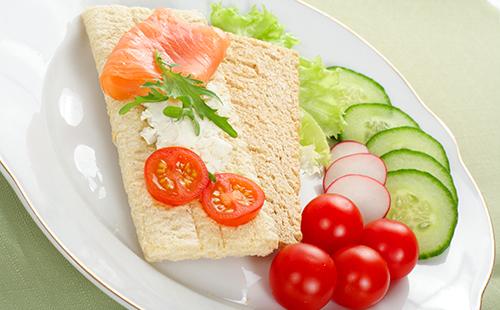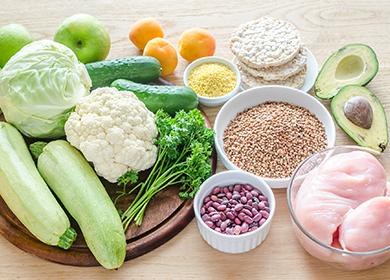The content of the article
Most people with allergies know for sure that they should not be consumed. But at the moment, there are more cases of allergies of an unexplained cause, when detecting an allergen is a particularly difficult task. Among the children's population of the planet, the phenomenon of multivalent sensitization has become widespread - an allergic reaction of the body to several products or substances at once.
Most often, food allergies are manifested by skin rashes of various localization, peeling, and the appearance of cracks. In children, the rash is localized on the cheeks and is popularly called diathesis.
The essence of a hypoallergenic diet
An antiallergenic (hypoallergenic) diet is a diet that excludes the use of potentially allergenic products. It is prescribed for food allergies of an unexplained cause, as well as for hypersensitivity reactions to an unknown substance (for example, with atopic dermatitis).
The essence of the diet is simple - the exclusion of a food allergen eliminates the body's reaction. But before the discovery of a substance undesirable for a particular case, there is a long way, which includes three stages.
- Compliance with nutrition until the allergy symptoms disappear completely.
- Gradual introduction of products to detect potentially dangerous.
- Drawing up an individual diet.
The principle of action of a hypoallergenic diet is simple - the complete exclusion of products eliminates the sensitization reaction, and their gradual return to the diet performs a diagnostic function. Products that are defined as deteriorating for an individual are completely excluded from the diet for a while or for life.
Sometimes a hypoallergenic diet is prescribed for sensitization, which is rarely provoked by food:
- with eczema;
- with bronchial asthma;
- at psoriasis;
- at scalp seborrhea.
In this case, the task of hypoallergenic nutrition is to reduce the load on antitoxic organs: liver, kidneys, as well as cleansing the body of substances that can worsen the condition of an allergic person.
Nutrition principles
What should be the table for allergies? Foods that meet special requirements can be included in the allowed list of foods on a hypoallergenic diet.
- Product Naturalness. It is better to use organic products grown in natural conditions with minimal use of additives and growth stimulants.Chemical purity of products is a difficult task for modern conditions, but if you have relatives in the village or if you can buy only organic food, then it's time to use it.
- Lack of processing. Whenever possible, it is necessary to introduce into the diet food suitable for consumption at a minimum temperature treatment.
- Regional Compliance. Hypoallergenic food should not include foods that are exotic for the area allergic, even with all their organicity and minimal allergens. It is better to focus on local vegetables and fruits typical for a particular season.
Allowed Meal Components
The permitted products, which are listed in the table below, can be used in any quantities and combinations, but it is better to give preference to single-component dishes.
Table - Products for the daily hypoallergenic diet menu
| Product group | Product List |
|---|---|
| Meat | - turkey; - chicken white meat; - beef |
| Cereals | - rice; - buckwheat; - oatmeal; - millet |
| Milk products | - Kefir; - fermented baked milk; - pure yogurts; - brine cheeses |
| Vegetables | - Cabbage of all varieties; - cucumbers; - salad; - leafy varieties of greens; - potatoes; - peas; - zucchini |
| Fruits | - apples; - pears; - gooseberry |
| Bread | - Rusks; - Rye bread; - yeast-free fresh baked goods |
| The drinks | - Black tea; - compote from local dried fruits |
| Fat | - Sunflower oil; - melted butter; - olive oil |
Medium Allergenic Products
Products from this group should not be included in the daily menu, as they have the potential to cause allergies. At first, following a diet is best to abandon:
- whole milk;
- add sour cream to dishes;
- yeast baking;
- Macaroni
- semolina;
- rabbits, veal;
- freshwater fish;
- green tea.
Apart from this list are sugar and salt. Their use is undesirable, but possible if moderation is observed. Pevzner's anti-allergic diet advises limiting daily salt intake to 7 g.
Forbidden food
A detailed description of a hypoallergenic diet includes strict prohibitions.
- Meat and offal. Pork, horse meat and veal belong to those varieties of meat that contain specific protein compounds that can cause sensitization. Offal, including duck and chicken, are also excluded from the diet.
- Smoked meats and sausages. Smoked fish, jerky, sausages in any form are completely excluded from the diet.
- Fish and seafood. Any kind of sea fish, caviar, seafood and algae are completely excluded from the diet as potential sources of allergens.
- Eggs and honey. These products so often cause allergies that they are always excluded completely until the allergen is precisely set, and sometimes for the duration of the diet.
- Confectionery. Chocolate, ice cream, cookies, milk and jelly desserts, caramel, cocoa and other sweet industrial products. A legit alternative to desserts is homemade marshmallow and dried apples or pears.
- Fruits and vegetables. Everything red and orange falls under the veto: beets, tomatoes, red apples, currants, cherries, cherries. Exotic fruits and vegetables are also prohibited, regardless of their color: citrus fruits, pineapples, kiwi, avocado, mango, papaya.
- Cereals and Corn. Wheat, rye, barley, and corn grits, due to its specific composition, are completely excluded from the diet.
- Spices and nuts. Any natural spices, chemicals, marinades, sauces, as well as herbal decoctions and infusions are banned.All types of nuts, seeds, unrefined oils extracted from them, allergies should not be consumed.
Antiallergenic and antihistamine diet. Important Nuances
A diet for allergies involves not only restricting the list of foods used, but also observing special nutritional rules.
- Emphasis in the diet. The main sources of energy when following a diet are cereals. It is very important to ensure sufficient intake of fiber and other dietary fiber, increasing the number of indifferent vegetables on the menu.
- Cooking method. The preferred method of heat treatment of products is cooking. It provides a reduction in the amount of allergens in foods. It is acceptable to use recipes involving steaming or baking.
- Diet. Diet implies adherence to the principles of fractional nutrition: the use of individual products at different times of the day, as well as frequent nutrition - frequent meals with a reduced volume of servings. Up to six meals are allowed per day.
- Fluid restriction. With urticaria of an allergic origin, swelling of soft tissues is often observed. The Pevzner diet recommends reducing the amount of fluid consumed until the edema disappears completely. In this case, it is important to reduce volumes due to liquid dishes, tea and drinks, and not pure water.
- Diet Dates. For an adult, it is recommended that you follow a hypoallergenic diet menu for two to three weeks, for children - no more than 10 days, due to the risk of vitamin deficiency and a slowdown in growth and development.
- Medical consultation. In complex cases of allergies, it is necessary to coordinate a diet with a doctor. This is especially true when creating a menu for children under ten years of age. It is also important to make sure that there are no contraindications to dietary restrictions - diseases of the stomach, intestines, blood, central nervous system.

Daily Menu Example
An approximate menu for the day with anti-allergic nutrition can be varied.
- Breakfast. Buckwheatrice or oatmealseasoned olive oil. Toasted bread. Tea.
- Lunch. Apple Marshmallow. Kefir, fermented baked milk or natural yogurt.
- Dinner. Vegetable soup with cereals, cooked on the second broth. Steam meatballs from chicken or turkey. Pita.
- High tea. Toasted stewed zucchini. Dairy products.
- Dinner. Salad of any varieties of cabbage, leafy greens, peas. Braised beef, potato side dish.
Rules for removing restrictions
Complete cessation of the diet may take several months. In this case, the transition to normal nutrition occurs taking into account the following rules.
- Gradual exit from the diet. The alternate introduction of products into the diet is applied. Low allergenic products are the first to be administered, and highly allergenic products are the last to be introduced.
- Adaptation Time. Each new product is administered every three days. This is necessary to fully monitor the body's response to new food.
- Close observation. To determine the allergen, it is important not only to look for a rash on the body, but also to monitor the general condition of the body in response to a new type of food. A signal of intolerance can be a headache, indigestion, a feeling of heaviness, bloating. For full monitoring, it is recommended to keep a written record of the products introduced and the reactions to them.
- Radical exclusion of allergens. If the deterioration is observed after eating Russian hard cheese, this does not mean that you need to try the Dutch variety. The best option is to exclude any kind of cheese for a period of a month and only after complete stabilization of the state can new experiments be carried out.
Reviews of a hypoallergenic diet indicate its severity and limitations. Naturally, full compliance with all recommendations initially causes difficulties, but as practice shows, the result is improved health and the disappearance of allergies. Compliance with all the principles of the diet will allow you to get rid of food allergies and find an insidious substance that causes a rash or general malaise. It is important to remember that any innovations in terms of nutrition and the use of medicines are important to coordinate with your doctor. Consultation of an experienced allergist will allow you to choose the most right direction in the correction of nutrition and lifestyle of an allergic person.
Other diets
Kefir Diet
How To Stretch Skinny Jeans
Diet for stomach ulcers
Gout Diet

